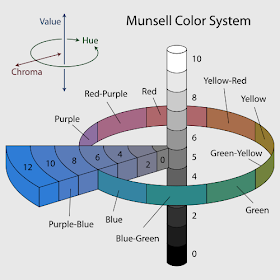As we said on Wednesday, we're pretty excited for the Olympics. With that in mind, we thought we'd look at the events in the competition and how their names made their way into the English language.
Archery
The term "archery" came from the Anglo-French
archerye and Old French
archerie. These words, of course, came from the word for "archer". All the words surrounding archery inevitably have their roots in the
Latin for bow,
arcus. The root of
arc comes from Proto-Indo-European (PIE) and meant "bowed" or "curved".
Athletics
Linguistically, "athletics" refers to the events in which "athletes" participate. In
Greek,
athlos was a contest and
athlon was a prize. So basically, athletes compete in a contest to win a prize. Sounds about right, doesn't it? The term
athletes in Greek was a prizefighter. This made its way into Latin as
athleta and into English in the early 15th century.
Badminton
The racket sport of badminton takes its name from where the sport was first played. Badminton House was in Gloucester, United Kingdom. Its name came from the Old English Badimyncgtun.
Basketball
It's a sport using balls and baskets, what more do you want?
Boxing
Boxing takes its name from box, a 14th-century verb that meant "to beat" which later meant "to fight with the fists" and gave us "boxing".
BMX
BMX is short for "Bicycle Motocross". We'll get to "cycling" in a bit.
Canoe (Slalom and Sprint)
The sport is named after the boat used. The word for that boat, canaoua, came from the Arawakan language used in Haiti in the mid-16th century. Many variants made their way into English, but by the 17th century it was established as "canoe".
Cycling
The term "cycling" refers to riding a bicycle, but "cycle" comes from Latin and Greek. In Greek, the work
kyklos referred to many circular things and motions. This became
cyclus in
Late Latin.
Equestrian
Equestrian events involve horses, and the term itself means "relating to horses". However, the term eques in Latin was a horseman or a knight, and equus, of course, means "horse".
Fencing
"Fencing" is technically a shortened form of "defencing", the act of defending oneself. Just like you have to do in this swordsman's sport.
Football
Football obviously comes from putting the words "foot" and "ball" together. However, if you're from one of the countries that calls it "soccer", the term comes from the shortening of "association football".
Golf
After a century out of the Olympics, golf is back. The sport gets its name from Scottish in the mid-15th century; the term gouf came from the Middle Dutch term colf meaning a "stick", "club", or "bat". Nowadays, you can only play golf with a club, though.
Handball
Another obviously named ball sport. "Hand" + "ball" = "Handball".
 Hockey
Hockey
The term for hockey is thought to have come from a Middle French term for a shepherd's staff, the hoquet, since hockey sticks are thought to resemble the staves and crooks used by shepherds.
Judo
The martial art of judo, which originated in Japan, unsurprisingly has a
Japanese name. In Japanese,
judo means "gentle way", as
ju means "gentle" and
do means a "way" or "art". What you see is what you get.
As we're halfway through the Olympic events, we'll continue our look at the rest of the games on Monday, when we'll be even more excited as the competition will be in full swing!










